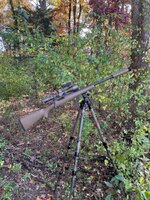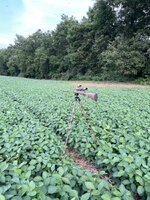Q_Sertorius
WKR
- Joined
- Jun 1, 2024
- Messages
- 2,697
Meh, it's more of a logic and trust sort of thing. Once a person starts to understand trajectory and blend that with how far they can see, it makes the process simple.
Like @nm.otter said, plainly knowing shots are from X-Z, then adding in if you shoot X at Z what happens and vice versa can take the RF out of the equation when the animal poops up.
For me, it’s more that I am used to constantly trying non-technological range estimation. I am used to using the standalone rangefinder just to confirm estimates. I also never owned decent binoculars before, so I usually relied on the Mark 1 eyeball for spotting deer and used my scope to confirm whether I wanted to shoot the deer. This is the first deer season where I have carried the Leicas. They are a game changer, but I am still getting used to them.



